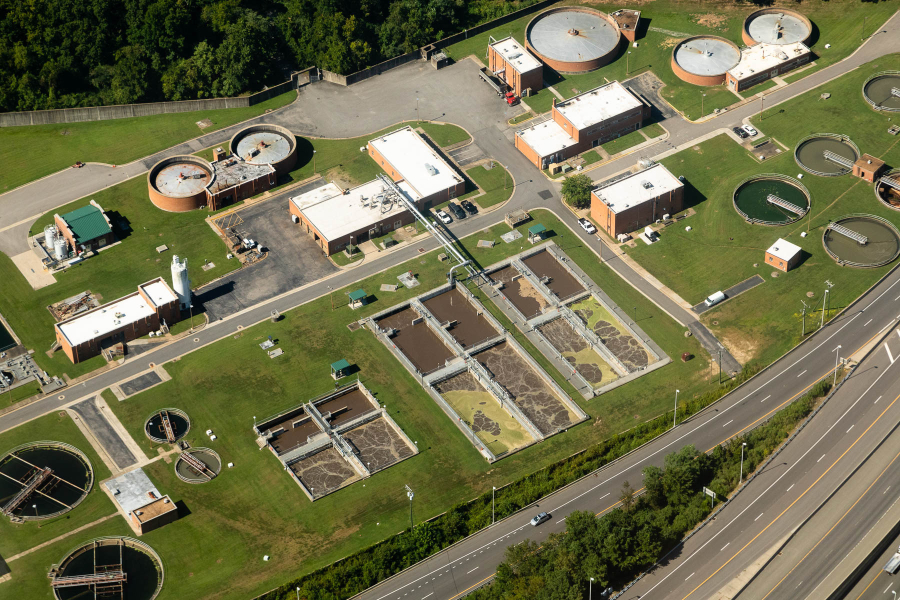For Virginia, decades of wastewater treatment upgrades make for a healthier Bay
Virginia has reduced nitrogen and phosphorus discharges to the Bay by more than 50% since 2007

The Chesapeake Bay is one of Virginia’s most important ecological and economic assets, and the Commonwealth has been diligently working with partner states and jurisdictions on protecting the estuary.
Through its partnership with the Chesapeake Bay Program, which turns 40 in December of 2023, Virginia has developed numerous initiatives to restore the Bay and its watershed. Early in the cleanup effort, Virginia found that pollution from wastewater treatment facilities showed significant opportunity for dependable and measurable nutrient reductions to the Bay.
Across the Bay watershed, wastewater treatment facilities take the water from our sinks, toilets, washing machines and bathtubs, removing nutrient pollution before discharging that water into rivers and streams. Without proper treatment, wastewater carries excess nutrients that cause harmful algae blooms, which lead to low-oxygen areas known as dead zones.
Over the years, Virginia’s Department of Environmental Quality (DEQ) has tackled this issue by financing upgrades to wastewater treatment facilities and implementing flexible yet effective regulations in the Commonwealth. As a result of Virginia’s work, 97% of all nitrogen reductions and 75% of all phosphorus reductions to Virginia’s portion of the Bay watershed came from the wastewater sector.

Upgrading wastewater treatment and credit trading
In 1997, Virginia took a major step in curbing wastewater pollution by establishing the Water Quality Improvement Fund (WQIF). This fund provided financial assistance to publicly-owned wastewater treatment plants in the Bay watershed, providing more than $1 billion in grants for over 100 projects implementing nutrient removal upgrades.
In 2005, the Commonwealth again bolstered its pollution management by developing a general permit for wastewater treatment facilities specifically within the Bay watershed. Permits often define pollution limits from a given source, which in this case was nitrogen and phosphorus discharges from wastewater facilities. This highly impactful permit was applied generally to all facilities in the watershed, but it came with a nutrient credit trading system that eased the pressure on facilities with less resources.
Through the credit trading system, facilities were able to make additional reductions in pollution and then “trade” those credits to other facilities, so that overall reductions are still met. The DEQ took a flexible approach that allowed larger facilities with greater financial capacity to upgrade first and provide credits to smaller facilities, until they were able to make their own upgrades. This minimized competition for limited financing and the services of engineering and construction firms capable of completing such specialized projects—all while ensuring nutrient reductions through consistent monitoring, reporting and compliance requirements.
Under the legislation, new and expanded facilities were expected to meet minimum technological requirements. The legislation also allowed the DEQ to implement a state-of-the-art method for treating wastewater—known as technology-based effluent limits—at facilities that were going above and beyond to meet nutrient discharge requirements.
These facilities have been instrumental in the success of the nutrient credit trading market, and have developed trading procedures, price structures and compliance plans through the Virginia Nutrient Credit Exchange Association.
A major reduction in nutrient pollution
Thanks to each of these measures, Virginia has reduced the amount of phosphorus discharges to the Bay from wastewater treatment facilities by more than 50% since 2007.
Reductions were so great that within four years of introducing the watershed general permit, point source dischargers met the required load reductions under the Chesapeake Bay Tributary Strategies—a watershed-wide pollution reduction plan that predated the Chesapeake Bay Total Maximum Daily Load.
Virginia is proud of its achievements in improving the health of the Chesapeake Bay, while also acknowledging the work that remains. Point source pollutant reductions are but one of the many approaches needed to further protect the region’s waterways. By prioritizing strategic funding opportunities, such as WQIF, and collaborating with Bay communities, Virginia will ensure continued progress on its efforts.
As nutrient loads continue to decrease, water quality improves, which leads to greater health of the entire Bay watershed and its flora, fauna and residents.

Comments
There are no comments.
Thank you!
Your comment has been received. Before it can be published, the comment will be reviewed by our team to ensure it adheres with our rules of engagement.
Back to recent stories